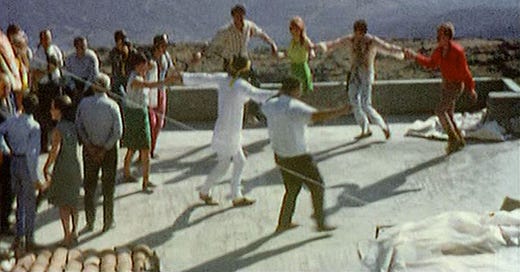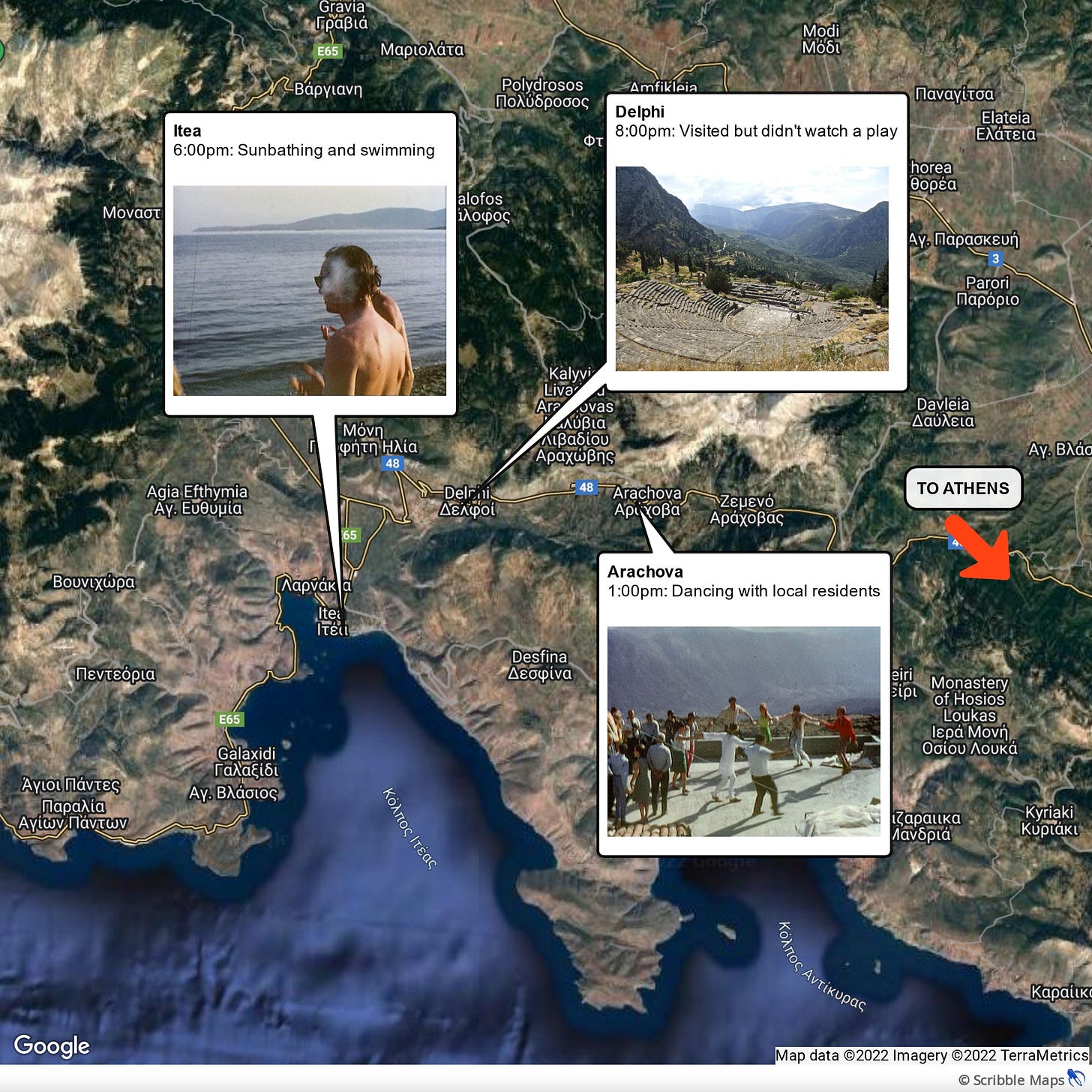8. Day trippers: a rooftop gig in a Greek mountain village
According to newspaper reports at the time, the Beatles met at least one tourism representative in Arachova, where they were presented with an array of gifts
The Beatles’ impromptu, final performance from a London rooftop in 1969 is well known. Lesser known is that according to a newspaper report, less than two years earlier they had been inspired to join in with some lower-profile rooftop revelry in a Greek mountain village.
A number of Beatles biographies tell us that before beginning their island cruise in 1967, the group spent some time visiting places on the Greek mainland. Often these add that the Beatles were surprised to find media interest in their movements, with some suggestions that tourism officials may have had a hand in bringing this about.
Reports in Greek newspapers at the time - some of which I’ve seen discussed before and others that I haven’t - give us some more clues about what may have happened. Interestingly, these reports contain some details that seem to align with images and videos of the Beatles’ trip. And they also add weight to the idea that tourism representatives were in some way connected.
One press outlet that covered the Beatles trip - but which I haven’t seen previously discussed in this context - is the Athens-based newspaper To Vima. On 21 July 1967, the paper reported that Ringo Starr and George Harrison1 had been spotted in Athens the previous day. An article followed the next day saying that on 21st, the two Beatles had spent about three hours at the beach at Vouliagmeni on the outskirts of Athens – where they “swam, ate fruit and sunbathed” and were accompanied by two Greek friends who were hosting them.
The report also says this about the motivation for the Beatles’ visit:
“The purpose of the arrival of the two Beatles in Greece is to negotiate the purchase of a large plot of land on an island in the Aegean where they will build villas so they can spend their holidays there. It is said that they were motivated by their friend, the singer Donovan, who has already decided to buy a big plot of land on [the island of] Paros.”
Then on Sunday 23 July, To Vima published an ‘exclusive’ article headlined “In the Beatles’ bolthole”. A journalist named L. Tsirigotakis reported that John and Paul had arrived in Greece at 4pm the previous afternoon, and were greeted by “a young blond-haired man with a moustache and super-modern attire” – presumably Alexis Mardas. Τhe newspaper said it had had a brief conversation with these Beatles: John Lennon is quoted saying that the group would “find another place for their holiday” if they were bothered too much by journalists. But the Beatles who had arrived in Greece earlier were apparently happier to speak to the press.

The article reported that To Vima had located the group’s Athens base after a five-hour search. Tsirogotakis had apparently met George and Ringo there – an “elegant villa” in an unnamed suburb – where they were spending their time carefree, “lying comfortably in the coolness of the veranda among the flowers in the villa’s garden”. The article attributes the following comments to the two Beatles the journalist spoke to at the villa:
“It is true that we are thinking of buying a plot of land on an island and building villas. But we have not reached a final decision yet.”
23 July: a trip to Arachova, Itea and Delphi
On Sunday 23 July all of the Beatles, and their travelling companions, visited part of the Greek mainland north of Athens – a trip that Tsirigotakis also reported on for To Vima (in an article published two days later). The group were due to attend a performance of ancient drama at Delphi that evening – and ahead of this, they reportedly visited two other places nearby.
According to Tsirogotakis’ article, the group’s first port of call, at about 1:00pm, was the mountain village of Arachova. The Beatles’ party of about 15 people travelled there in a cream-coloured Mercedes and two large taxis, we are told2. The article then says that after a brief interaction with a tourism representative, the Beatles found themselves joining in with a traditional Greek dance accompanied by an ensemble playing from the rooftop of a local home.
“In Arachova, the representative of the Tourism [organisation3] said to the Beatles: ‘You choose the place that you want to stay to rest.’ They didn’t think for long. They pointed at a simple house, which stood on a hill and belonged to a builder called Mr Raptis.”
Within a few minutes, says the article, “a party had started up on the roof of that rustic home”. Quickly an “orchestra” was formed from traditional Greek instruments – a santouri (a stringed instrument played with hammers) and a klarino (like a clarinet), the report says. We are told that the ensemble began to play ‘Kalamatianos’ folk dances, and that at the same time, a group of boys and girls from Arachova demonstrated local dances.
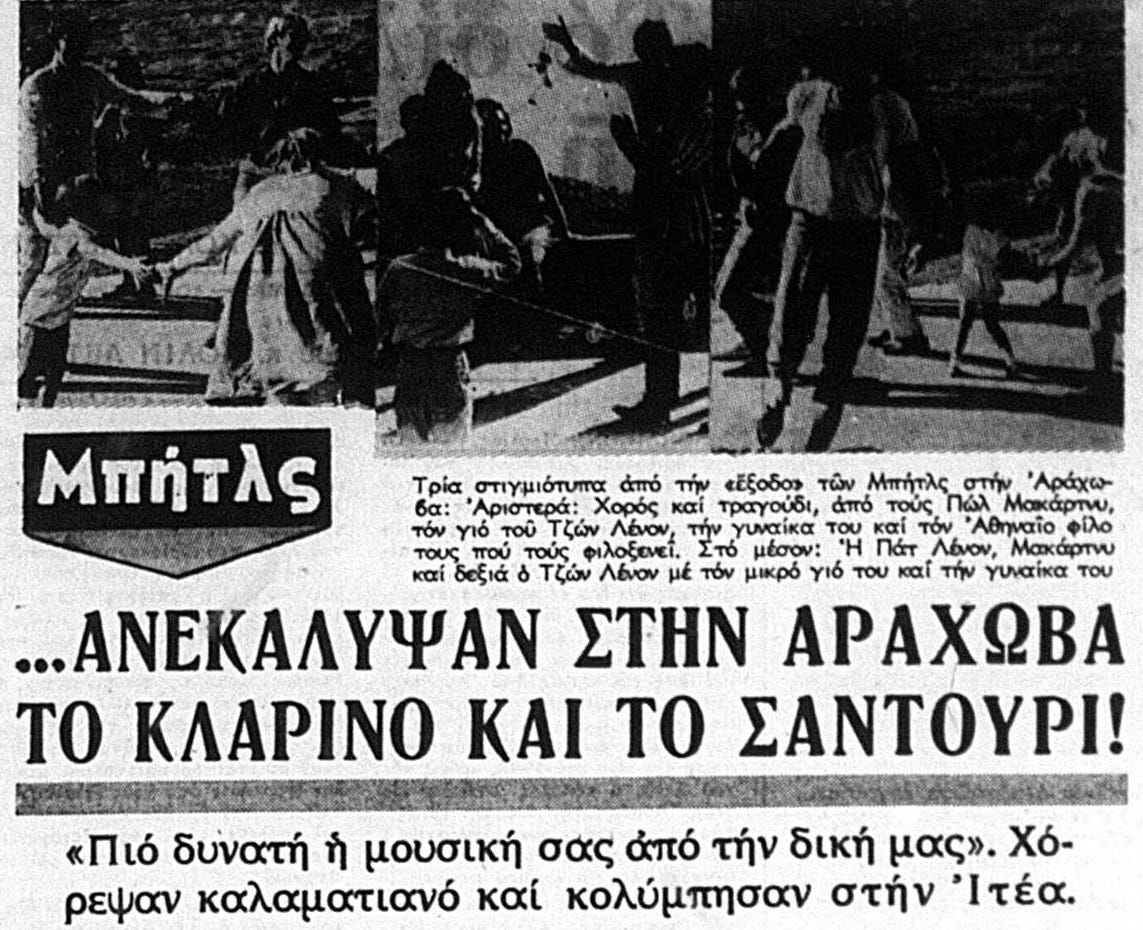
Tsirigotakis writes that Beatles seemed intrigued by this – and that when asked his thoughts on the music, George Harrison described it as “a lot more vigorous and powerful” than the Beatles’ own songs. Reportedly, the group then joined in: having been “excited” by the Kalamatianos, they danced “hand in hand with the locals for quite some time, with Greek spirit”.
In some respects, the report of the event here matches other information we have about the group’s trip. We know that The Beatles were photographed at Arachova alongside people holding traditional Greek instruments. And there’s a scene in the Anthology documentary of the group dancing hand in hand in a circle with others – on what could be the roof of a house at the top of a hill (see above).
When this revelry had finished, the To Vima article says that the Beatles and their party were given gifts: “dresses and bags for the women, beads and ancient masks for the men”. Following this, Ringo took pride in continuously wearing a big necklace with yellow beads, according to the report, while Paul wore a large set of bells around his neck.
We are then told that at around 6:00pm, the Beatles’ party visited the beach at the nearby seaside town of Itea. Ringo, John and George lay on the sand, while Paul went into the sea with Lennon’s son Julian, whom the article says was wearing a lifejacket/float (σωσιβιο). They were later joined by Jane Asher, Patty Harrison, and – apparently – an unnamed Swedish actress. This scene also appears to match one in the Anthology documentary – although that clip doesn’t include the conversation between John Lennon and his son reported in To Vima:
- Daddy, come with us, it’s wonderful. Come, let’s play with Paul.
- I’m getting cold, John Lennon replied to him. The sea here is colder than the English Channel.

At 8:00pm, the Beatles’ party was in Delphi, where they “stayed a little while, ate and afterwards returned to their bolthole in Athens”. But the group scrapped their original plans to watch a performance of ancient drama there, the article says, adding that they were “exhausted”.
The Beatles’ activities on 23 July (according to ‘To Vima’)
‘Entertained by the tourism organisation’: another newspaper report
The Beatles’ excursion on this day was also reported by the Greek newspaper Makedonia (on 25 July 1967), though in this article – which describes the group as being “entertained by the tourism organisation”4 – some of the details given are different.
According to the Makedonia article, the group first visited Itea for a swim in the sea. Following this, we are told that the Beatles were taken by tourism representatives to a large house at Arachova, where they ate kokoretsi (a traditional dish consisting of seasoned offal wrapped in intestines) and drank local wine on the balcony.
At the end of this meal, the group and their companions were presented with gifts, according to the report:
“During dessert time, they were offered5 gifts by the tourism representatives. For the men: shirts with meander patterns, worry beads, tsolia figures, various bead charms and other folk art items. For the women: skirts with meander patterns, bead charms, necklaces and pashminas; and for John Lennon’s child, a hand-woven textile, a shirt with meander patterns and a tsolia figure.”
A ‘tsolia’ was a type of soldier historically in the Greek army, who wore a distinctive traditional uniform – indeed, the kind of uniform worn by the figure that Julian Lennon is holding in one scene from the Anthology documentary:
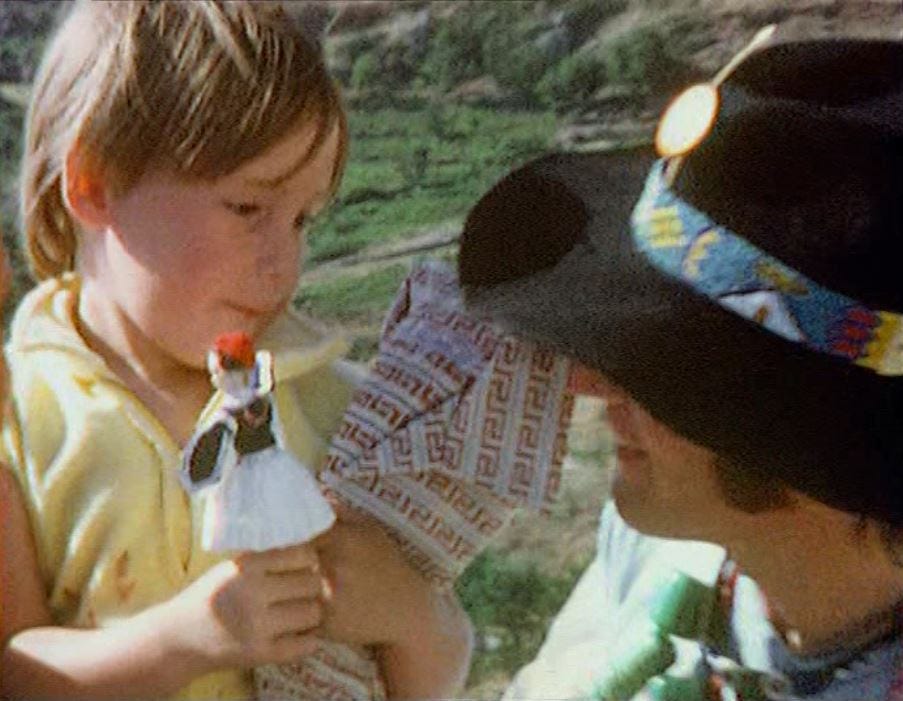
In line with the To Vima report, the article then says that that evening the Beatles went to Delphi, where they were due to see a play (we are told by Makedonia that this was ‘Agamemnon’, a tragedy by Aeschylus) but left without watching it as they were tired.
‘Plans to invest money’
The Makedonia article claims that the Beatles spoke about investing money in Greece, alluding to possible plans to build villas in the islands:
“As they said, they intend to invest a significant amount of money, but did not clarify whether they intend to buy farm land in the Greek islands to build summer villas or if they intend to engage in business and build hotels or similar tourism facilities. Before they return home, they will visit a hotel in Athens, where a press conference will be held, and they will announce the purpose of their trip and the decisions they have made.”
As far as I know, such a press conference was never held, and the Beatles never made any official announcement about investment plans in Greece. What we do have is the reported comments from Paul McCartney, included in another Makedonia article a few days later, that the group had wanted to buy the island of Tsougria near Skiathos. This, the article says, was blocked by the Greek Ministry of Agriculture – who reportedly overruled “tourism” who had supported the sale.
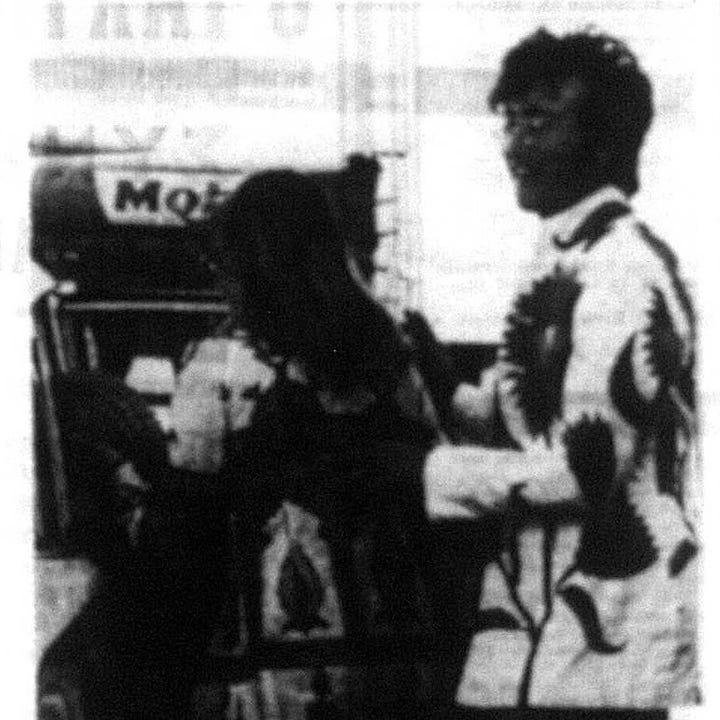
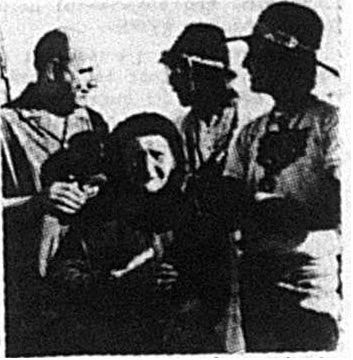
Interactions with at least one tourism representative
Although these two newspaper reports of the Beatles’ excursion on 23 July are different, they both agree that the group visited Arachova and Itea before going to Delphi and then leaving without watching a play they had been due to see. And some of the details they provide seem to align with videos and photographs of the Beatles’ trip.
Interestingly, the reports in both To Vima and Makedonia describe the Beatles interacting with at least one tourism representative. While To Vima only mentions a brief interaction with such a person, Makedonia says that the group were “entertained by the tourism organisation”.
We don’t know how accurate these reports are. But in my opinion, they give the impression that Greek tourism officials certainly knew about the Beatles’ excursion on 23 July, and may have helped to facilitate at least some of it. And this aligns with other accounts – such as the statement by the Beatles’ authorised biographer Hunter Davies that the group were “used as propaganda” by Greece’s “tourist people”.
(Through their representatives, I have offered Paul McCartney and Ringo Starr the chance to comment on the newspaper reports discussed above.)
While both of the newspaper reports above apparently include some accurate details, it is Tsirigotakis, the To Vima reporter who visited the Beatles’ “bolthole” in Athens, who appears to have had the best access to the group. The journalist may have been in touch with a person who supplied information about the Beatles. But if so, how exactly this arrangement worked or came about isn’t clear.
In this article, his name is misspelt ‘Hamilton’
Though one of these broke down outside the village and the passengers had to take a private car for the final part of the journey, we are told.
In Greek, “ο εκπροσωπος του Τουρισμου” - the upper case ‘T’ suggests a representative of an official tourism organisation of some kind.
In Greek, “φιλοξενούμενοι του οργανισμου τουρισμου”.
The word in Greek, ‘προσεφερθησαν’, can mean either ‘they were offered’ or ‘they were given’.

